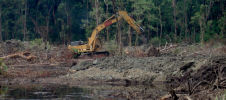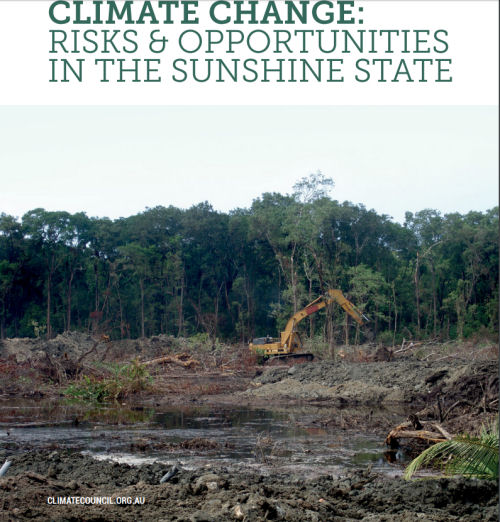Queensland land-clearing responsible for 80% Australia's Greenhouse Gas emissions
 Land-clearing policy in Queensland has had a significant impact on rates of vegetation clearing. Over recent decades changes in land-clearing regulations in Queensland have led first to a
Land-clearing policy in Queensland has had a significant impact on rates of vegetation clearing. Over recent decades changes in land-clearing regulations in Queensland have led first to a
decrease in vegetation clearing (when strong laws were enforced) and then to an increase in vegetation clearing (when laws were relaxed). Relaxation of land-clearing regulations in 2013
in Queensland led to a significant increase in the vegetation clearing rate. More than one million hectares of woody vegetation, of which 41% was remnant vegetation, were cleared in Queensland
between 2012-13 and 2015-16.

395,000 hectares of woody vegetation were cleared in 2015-2016, representing a 33% increase over the previous year. This is equivalent to roughly half of the forest cleared in the Brazilian Amazon rainforest in 2016.
The 2015-16 clearing rate in Queensland was the highest since 2003-04 (490,000 hectares/year).
Queensland has become Australia’s hotspot for land clearing, accounting for between 50-65% of the total loss of native forests in Australia over the last four decades.
In 2015 the land use sector in Queensland generated 19 million tonnes of greenhouse gas pollution, which was more pollution than the agriculture sector or around 20% of the pollution
from the entire energy sector including electricity, stationary energy and transport.
In 2015 Queensland was responsible for around 80% of Australia’s greenhouse gas pollution from land-use change.
In terms of emissions, 19 million tonnes of greenhouse pollution was generated by the land use sector in Queensland in 2015. This is equivalent to more greenhouse pollution than
Queensland’s agriculture sector or around 20% of the greenhouse pollution from the entire energy sector in Queensland including electricity, stationary energy and transport (AGEIS 2015a).

Recent comments